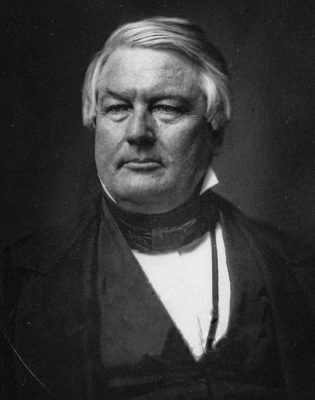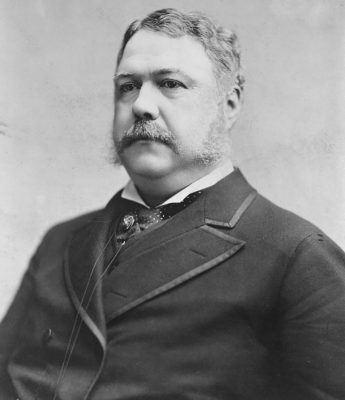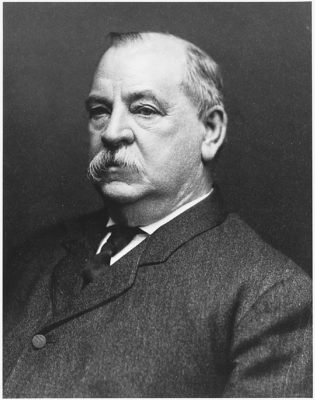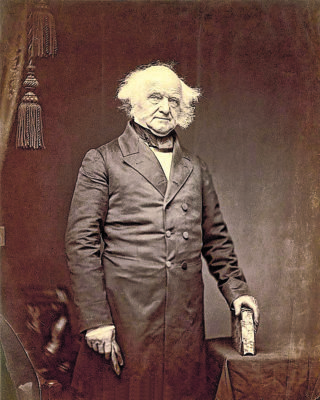In the nation’s early years, Virginia was the nation’s most populous state. Presidents came from Old Dominion: Washington, Jefferson, Madison, Monroe, John Tyler and Zachary Taylor. With its busy port a destination for the world’s commerce, New York would replace Virginia as the most populous state. It too, would become a breeding ground for chief executives. The first New Yorker to be elected was Martin Van Buren, who had served as Andrew Jackson’s vice president. Others followed: Millard Fillmore, Chester Arthur, Grover Cleveland, Theodore Roosevelt, Franklin D. Roosevelt and Donald Trump. In today’s New York, the upstate region is at best an afterthought. At one time, it produced presidents. Academics regularly come up with presidential rankings—first (usually Abraham Lincoln) to last (the hapless James Buchanan)—that few pay attention to. Here’s our homage to Empire State Presidents.

Millard Fillmore
As with Van Buren, Fillmore was a native of upstate New York, in this case, Cayuga County. In 1848, Mexican War hero Zachary Taylor was elected president with Fillmore as his running mate. Two years later, Taylor succumbed to Washington’s humid summers and died unexpectedly at age 66. Fillmore’s presidency was marked mostly by foreign policy, especially the famed opening to Japan as conducted by Commodore Matthew Perry, one that was consummated after Fillmore left office. In 1852, Fillmore failed to win the Democratic Party’s nomination. Four years later, he attempted a comeback as standard bearer for the anti-immigration American Party. That bid fell short, too. When Civil War broke out, Fillmore, although elderly, did not sit on the sidelines. He formed a home guard, the Union Continentals, which remained active throughout the conflict.

Chester Arthur
Arthur followed the same pattern as Van Buren and Fillmore. An upstate New York native, he served as James Garfield’s vice president. Taylor died a natural death. In 1881, Garfield was assassinated by a deranged gunman, who reportedly wanted Arthur to become chief executive. Arthur, too, served only one term as president. His one term focused heavily on civil service reform as the nation now coped with a rising urban population and the bureaucratic problems such a demographic change entailed. Historian George F. Howe has singled out Arthur as an honest politician in a time of widespread corruption. “Arthur adopted [a code] for his own political behavior but subject to three restraints: he remained to everyone a man of his word; he kept scrupulously free from corrupt graft; he maintained a personal dignity, affable and genial though he might be,” Howe maintained. “These restraints…distinguished him sharply from the stereotypical politician.”

Grover Cleveland
With Cleveland, the upstate dynasty rolls on. “Grover the Good” was born in Caldwell, NJ, but reared in Clinton, a town in Oneida County. In 1881, Cleveland was elected mayor of Buffalo as a reformer Democrat. He parlayed that success into winning the governorship of New York only a year later. Cleveland topped off his incredible run by being elected president in 1884. Four years later, Cleveland was defeated by Benjamin Harrison. Undaunted, Cleveland was promptly elected again in the 1892 election. Cleveland was a Democrat in a time of Republican Party domination. His policies were similar to GOP presidents, including trade protection, anti-immigration measures and armed neutrality. Cleveland kept government spending to a minimum, regularly wielded his veto pen. He was both the first president to marry while in the White House and the first to be captured on film.

Martin Van Buren
Van Buren was a native of little Kinderhook, an attorney turned politician who was elected president in 1836 and defeated for re-election in 1840 by William Henry Harrison. Van Buren is forgotten today, save for a high school in Queens County, but he has his fans. In a 2001 collection, Reassessing the Presidency, libertarian author Jeffrey Rogers Hummel gave “The Little Magician” high marks: He avoided potential conflicts with both Great Britain and Mexico, while resisting the impulse to increase government spending during the Panic of 1837. During Van Buren’s sole four-year term, Americans, Hummel claimed: “[Enjoyed] greater freedom from government intervention than any other people on the face of the Earth.”
Check back next week for the conclusion to our overview of Empire State Commanders in Chief.


















